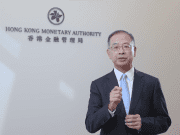8 Reasons Why Low-Risks Portfolios Do Not Work Effectively in Asia
Asia doesn’t have a history of wealth management and a range of investment options. Since World War II, Wealth Management and Investments for much of the population in Asia centers around:
- Salary & Savings
- Property Investments
- Insurance and Savings Products
- Stock Marketris
Countries which created an early bond market by selling War Bonds during World War I had a vastly bond-educated population.
- Austria and Hungary for World War I
- Canada renamed Victory Bonds after World War I
- Germany Kriegsanleihe (Public Bonds) for World War I
- United Kingdom Treasuries / War Bonds for World War I
- United States Liberty Bonds for World War I
With bonds and money market instruments playing an important role in low-risks portfolio, we look at why low-risks portfolio does not work effectively in Asia:
No. 1 Asia Grew Without a Debt Market

With Asia developing at a high growth rate since World War II, foreign direct investments and demand for loans which translate into high savings interest rate created a lesser need for a bond market. Thus, even with the capital market infrastructure in place, the bond market
- in Asia remains largely institutional based
- remains dysfunctional due to to a fragmented market (w/o a single unified debt leader / currency)
- have illiquid pricing and lack of flow of information
This means an important asset class alongside equity, which drives the financial market liquidity and capital allocation has little importance in Asia. Investing into bonds faces all the risks of an underdeveloped financial product.
No. 2 The Lost Generation Without Knowledge of Debt

Getting the teenager or young adult to put money into savings account teaches the habit of savings and prudence. Getting them to buy bonds which lends money to corporates and government teaches them judgements, businesses and global economics. Most importantly, to decide when to take more risks (equity) and when to take less risks (bonds or cash).
Without the knowledge of what really is debt, the general population looks at debts only as loans for housing, cars, education or positive income generating investments (Yield Differential) as debts.
- Property Rental Income
- Stock Dividends
This means much of the population will not understand the basic mechanics of bonds, as an investment and asset class in their life. Without their trust and active participation, the bonds and bond prices remains driven by top-down decisions or institutional trading. Issuers have no incentives to build trust with the population, but will channel time to build institutional relationships.
No. 3 The Lost-Multiplier Effect

Banks and deposits play a critical role to a properly functioning domestic financial market and economy for borrowings and lending, funded by excess cash by the population.
Systemic risks of an individual or small community is being covered by insurance, another important financial instrument. Like the banks, insurance helps the economy by:
- Shifting large financial risks from governments to individuals
- Pooling of risks by getting everyone to contribute a small amount
- Balancing the insurance budget by ensuring the payout rate is lower than the contribution rate
- Excess funds are invested for longer term to generate surplus to lower cost of distribution and manage fluctuating insurance risks over time
The transfer of risks to the individuals means the individuals, communities and companies make decisions based on risks, returns and profitability. This creates collective quick decision making, which keeps the system flowing efficiently. The collective participation results in a higher multiplier effect or turnover of money.
Other than a significant loss in capital market participation, Asia also loses a quick “invisible” monetary and economic growth or recovery tool. This means analysis and allocation of assets into lower-risks investments, becomes a mere exercise.
No. 4 Increasing the Cost of Equity

Without the opportunity to tap onto debts / bonds to fund companies expansion and business growth, businesses, companies and governments have to tap onto expensive capital in equity.
- The missing bond market means equity cost is inflated
- Returns on equity is expected to be higher (since the only option is equity)
- Risks on equity is expected to be higher (there is little option for loans or bond market)
- Institutions refusal to participate in bonds means individuals have no opportunity to participate
The increase in cost of equity means a drop in wide-spread risk-taking within Asia. This indirectly affects the efficient market pricing of bonds, turning it into a volatile investments:
- During less risky times, the pricing and risks trade close to deposits
- During risky times, the pricing and risks trade close to equities
No. 5 Intervention or Influence

Asia bond markets faces constant intervention or influence, partly due to developing of key economic infrastructures being built by state-owned enterprises. In the early stages, such interventions and influences provide investors and people confidence in their sustainability and well-being.
As the market moves into a private-driven economy and more open capital market activities, intervention and influence causes mis-pricing in risks and resulting pricing.
This creates uncertainties, especially in bond prices where the prices should be relatively stable and volatile over time, being affected occasionally by mainly credit risks.
No. 6 More Capital & Systemic Risks In Asia
Asia faces many more risks due to the underdevelopment of a capital market. This creates more risks on capital controls, currency risk, hot funds flows which inevitably causes fluctuation in money market funding and short-duration bond prices.
No. 7 No Bill Gross, No PIMCO

A rising star or equal of Bill Gross or PIMCO, one of the most well-known name in bonds and fixed income fund management, is non-existent in Asia.
Without leadership or wider participation in bonds or fixed income, this asset class remains a passive investment. Investments into bonds or money market funds are driven by a “theoretical need basis”, based upon traditional & modern portfolio theory.
The case for bonds allocation becomes fundamentally flawed, with Asian investors participating in United States Bonds or European Bonds, bearing additional and irrelevant currency and systemic risks.
No. 8 The Truth About Low-Risks Portfolio

The Theoretical Low-Risks Portfolio allocation looks like this:
- 20% Equities
- 70% Bonds
- 10% Money Market
While the actual Portfolio allocation looks like this:
- 60% Equities or Real Estate (Net Equity)
- 10% Bond Funds
- 30% Cash
Do you think Low-Risks Portfolios are working effectively in Asia?
Popular Links:
Related Articles:
- 8 Reasons Why Building a Portfolio is Tough in Asia
- 11 Interesting Strategies to Advice Clients
- Most Popular Investment Theories Clients Ask Wealth Managers
- How Do You Start Advising Clients in Your New Job?
- What Happens if You Make Mistakes, Say The Wrong Things to Clients?
Sign Up / Register
Caproasia Users
- Manage $20 million to $3 billion of assets
- Invest $3 million to $300 million
- Advise institutions, billionaires, UHNWs & HNWs
Caproasia Platforms | 11,000 Investors & Advisors
- Caproasia.com
- Caproasia Access
- Caproasia Events
- The Financial Centre | Find Services
- Membership
- Family Office Circle
- Professional Investor Circle
- Investor Relations Network
Monthly Roundtable & Networking
Family Office Programs
The 2025 Investment Day
- March - Hong Kong
- March - Singapore
- July - Hong Kong
- July - Singapore
- Sept- Hong Kong
- Sept - Singapore
- Oct- Hong Kong
- Nov - Singapore
- Visit: The Investment Day | Register: Click here
Caproasia Summits
- The Institutional Investor Summit
- The Investment / Alternatives Summit
- The Private Wealth Summit
- The Family Office Summit
- The CEO & Entrepreneur Summit
- The Capital Markets Summit
- The ESG / Sustainable Investment Summit

































